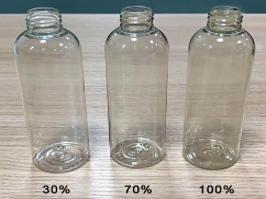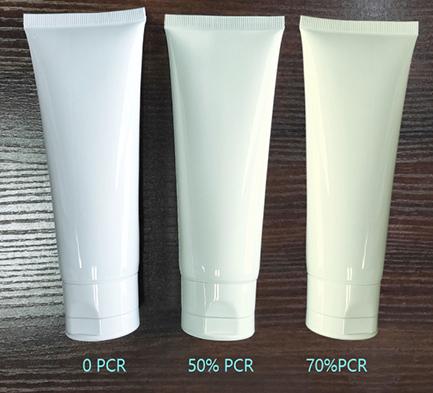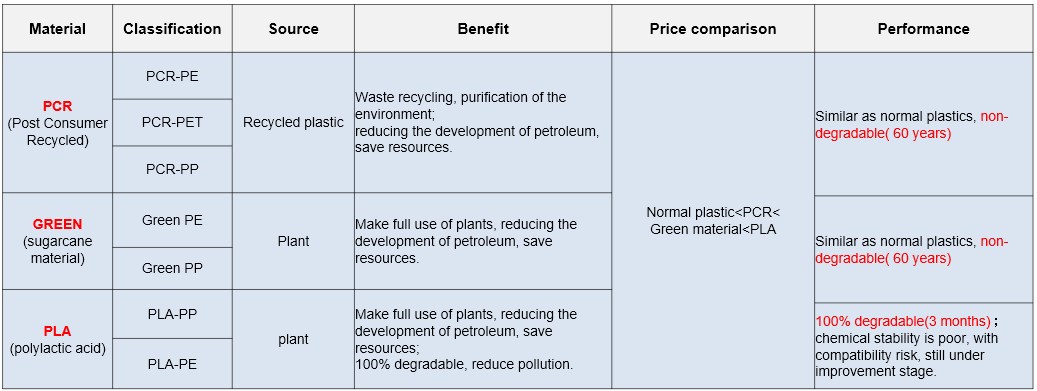The concept of sustainable packaging was proposed around 2015. As environmentalists exposed environmental pollution, the World Environmental Protection Organization and the governments of some countries began to advocate attention to the ecological environment.
Sustainable packaging includes three categories: Recycled Packaging, Green Packaging and Biodegradable Packaging.
Recycled Packaging is also called PCR(post consumer recycled) packaging. There is no limit to the source of PCR raw materials, which can be collected from land, lake, beach, ocean, etc. However, the materials recovered from the ocean are generally named Ocean Plastic, which is well known in the industry. PCR production needs to go through complex and strict collection, sorting, crushing, melting, purification, disinfection, and the finished products need to be tested and certified by international authoritative certification bodies.

Green Packaging is also named sugarcane material, 100% raw materials come from sugarcane / corn or other plant stalks, while normal plastics come from petroleum. The more sugarcane is used, the less exploitation of the earth's resources will be.Green material is protected by patent. At present, there are very few producers who can provide this material.

Biodegradable Packaging is also named PLA, 100% of the raw materials come from plants.PLA is 100% degraded, effectively reduce environmental pollution, is a real environmental protection material.

The above three materials are all eco-friendly material recognized by international environmental protection organizations. The most suitable solution can be selected according to the packaging concepts.



